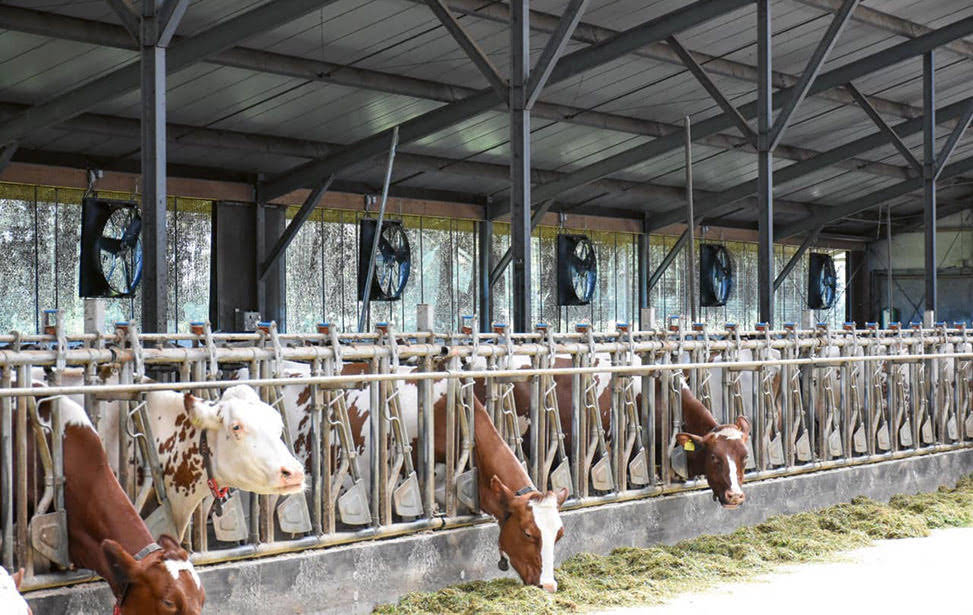- English

The ruminant digestion of cattle produces a great deal of heat. Furthermore, additional periods of prolonged heat occur every summer and affect many of the dairy cow’s performance parameters.
The first signs of increased respiratory rate, decrease in feed intake and shorter lying periods can be seen in high-performance animals as soon as temperatures reach 18⁰C.
A respiratory rate of more than 70 breaths[/minute] indicates on its own that the animals are struggling with the heat.
Improving natural ventilation
The natural ventilation provided by a free flow of air on the eave sides is enhanced by side walls that can be completely opened, but there is often no cross-ventilation during high summer temperatures when air remains still.
Fan cooling
Abbi-Aerotech BV has been marketing cross ventilation systems since 2010.
The use of fans installed in exterior walls brings fresh outside air into the barn and actively cools the animals. Air movement around the animals helps them to dissipate heat, thus reducing the temperature they feel. The cooling effect is achieved by maintaining an air speed of at least 2 m/s. Air is blown along lying cows in the length dimension of cubicles, thus ensuring optimum cooling.
Abbifan 140-XXP-2 fans are automatically tilted forward at an angle of 15 to 18⁰ so that the necessary air speed is delivered to the area where the animals are.
Since the lower edge of the fan is positioned 2.70 m above lying surfaces, protective grills are not required by liability legislation. Cleaning and maintenance is significantly simplified, and air capacity is not restricted.
In addition, the air quality in the barn is much improved, and there are fewer problems with flies!
Important to consider power consumption
In addition to the initial cost, actual power consumption, achievable air speed and noise levels should be taken into account when selecting a fan.
Air capacity is not as important as the air speed at various distances. On average, the fans operate about 2,500 hours per year, at either full or partial load. The maximum power consumption of the Abbifan 140-XXP-2 fans, which have direct drives and EC motors, is
530 W/h when operating at top speed, resulting in annual savings of about € 450 per fan compared to existing models. An extra benefit of direct drive is that there are no maintenance costs.
Water cooling
There are two options available for cooling by evaporation, both of which function according to the same physical principle. Cooling is produced by controlled evaporation of water.
This can take place directly on the cow’s back at the feed fence using cow showers (“soaking”) or through high-pressure misting systems spraying fine mist into the air at 70 bar. Misting is reducing the air temperature, while soaking reduces a little the body temperature.
If soaking is used, nozzles are mounted in a tube along the feed fence. The nozzles produce large drops and are automatically controlled by an on/off program. The limiting factor for both systems is the prevailing humidity in the barn!
Cross-ventilation makes the installation of a high-pressure misting system easier and significantly more cost-effective. Spray nozzles need not be mounted on the fan.
In any event, ventilation should be automatically controlled. Cows will be exposed to heat stress situations with increasing frequency in coming years. For this reason, farmers need to take appropriate measures to reduce heat stress in order to produce milk from healthy and high-performing cows.